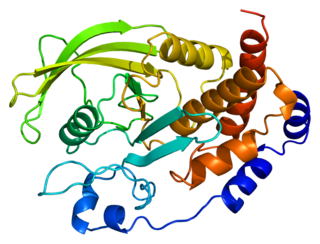
Tyrosine-protein phosphatase non-receptor type 1 also known as protein-tyrosine phosphatase 1B (PTP1B) is an enzyme that is the founding member of the protein tyrosine phosphatase (PTP) family. In humans it is encoded by the PTPN1 gene. PTP1B is a negative regulator of the insulin signaling pathway and is considered a promising potential therapeutic target, in particular for treatment of type 2 diabetes. It has also been implicated in the development of breast cancer and has been explored as a potential therapeutic target in that avenue as well.

Receptor-type tyrosine-protein phosphatase alpha is an enzyme that in humans is encoded by the PTPRA gene.

Receptor-type tyrosine-protein phosphatase F is an enzyme that in humans is encoded by the PTPRF gene.
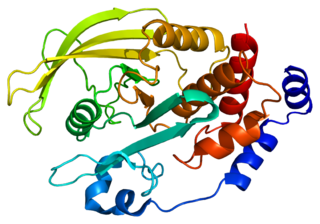
Tyrosine-protein phosphatase non-receptor type 2 is an enzyme that in humans is encoded by the PTPN2 gene.

Protein farnesyltransferase/geranylgeranyltransferase type-1 subunit alpha is an enzyme that in humans is encoded by the FNTA gene.

ARF GTPase-activating protein GIT1 is an enzyme that in humans is encoded by the GIT1 gene.

Receptor-type tyrosine-protein phosphatase epsilon is an enzyme that in humans is encoded by the PTPRE gene.

Receptor-type tyrosine-protein phosphatase eta is an enzyme that in humans is encoded by the PTPRJ gene.

Tyrosine-protein kinase BLK, also known as B lymphocyte kinase, is a non-receptor tyrosine kinase that in humans is encoded by the BLK gene. It is of the Src family of tyrosine kinases.
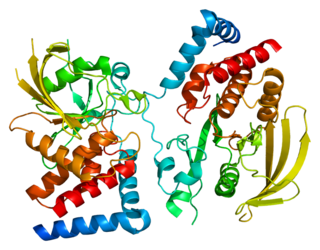
Receptor-type tyrosine-protein phosphatase gamma is an enzyme that in humans is encoded by the PTPRG gene.

Receptor-type tyrosine-protein phosphatase N2 (R-PTP-N2) also known as islet cell autoantigen-related protein (ICAAR) and phogrin is an enzyme that in humans is encoded by the PTPRN2 gene. PTPRN and PTPRN2 are both found to be major autoantigens associated with insulin-dependent diabetes mellitus.

Tyrosine-protein phosphatase non-receptor type 3 is an enzyme that in humans is encoded by the PTPN3 gene.

Interleukin-2 receptor subunit beta is a protein that in humans is encoded by the IL2RB gene. Also known as CD122; IL15RB; P70-75.

Membrane-associated guanylate kinase, WW and PDZ domain-containing protein 3 is an enzyme that in humans is encoded by the MAGI3 gene.
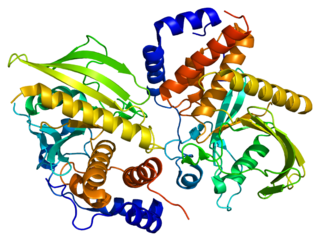
Tyrosine-protein phosphatase non-receptor type 9 is an enzyme that in humans is encoded by the PTPN9 gene.
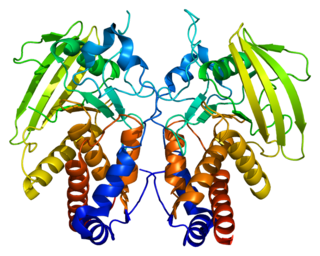
Receptor-type tyrosine-protein phosphatase O is an enzyme that in humans is encoded by the PTPRO gene.

Tensin-like C1 domain-containing phosphatase is an enzyme that in humans is encoded by the TENC1 gene.

Tyrosine-protein phosphatase non-receptor type 4 is an enzyme that in humans is encoded by the PTPN4 gene.

Receptor-type tyrosine-protein phosphatase H is an enzyme that in humans is encoded by the PTPRH gene.

Tyrosine-protein phosphatase non-receptor type 21 is an enzyme that in humans is encoded by the PTPN21 gene.
























